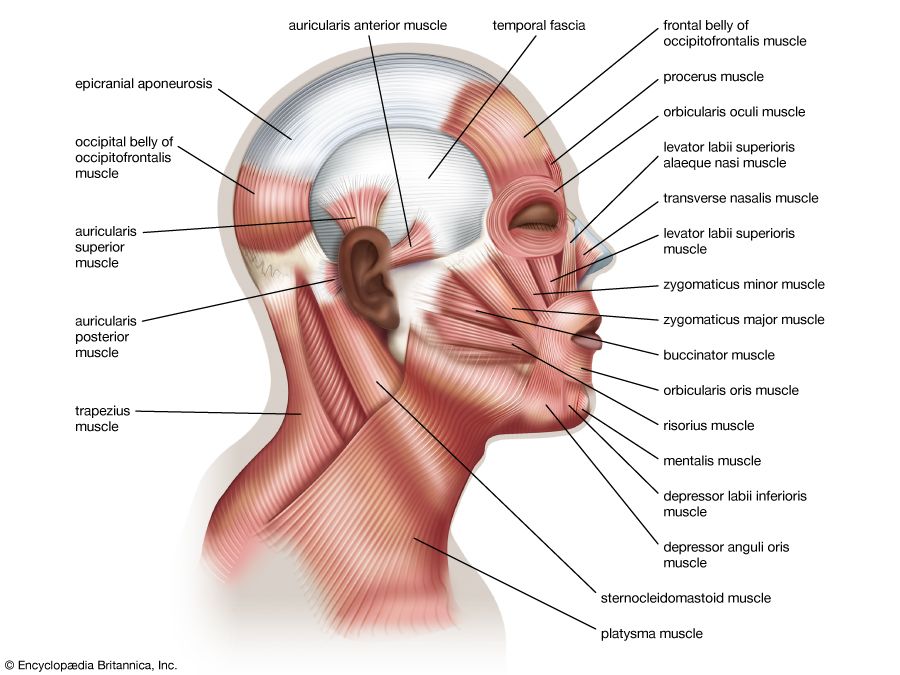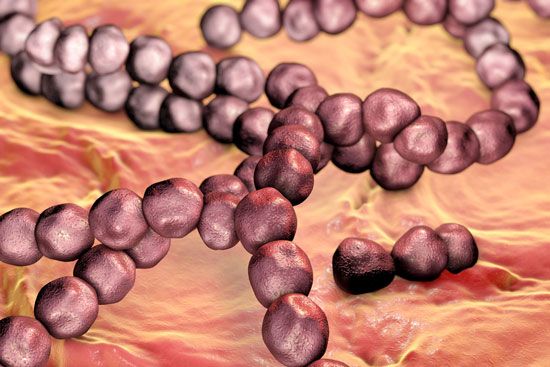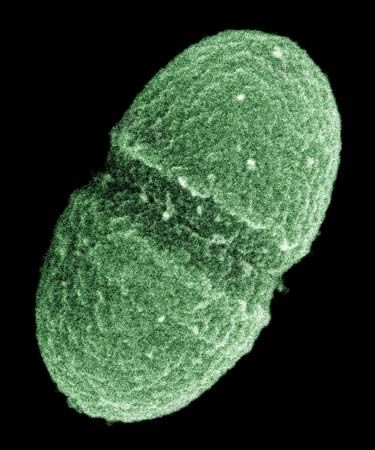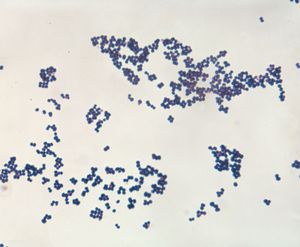human microbiome
Our editors will review what you’ve submitted and determine whether to revise the article.
human microbiome, the full array of microorganisms (the microbiota) that live on and in humans and, more specifically, the collection of microbial genomes that contribute to the broader genetic portrait, or metagenome, of a human. The genomes that constitute the human microbiome represent a remarkably diverse array of microorganisms that includes bacteria, archaea (primitive single-celled organisms), fungi, and even some protozoans and nonliving viruses. Bacteria are by far the most numerous members of the human microbiome: the bacterial population alone is estimated at between 75 trillion and 200 trillion individual organisms, while the entire human body consists of about 50 trillion to 100 trillion somatic (body) cells. The sheer microbial abundance suggests that the human body is in fact a “supraorganism,” a collection of human and microbial cells and genes and thus a blend of human and microbial traits.
Discovery of the human microbiome
The first scientific evidence that microorganisms are part of the normal human system emerged in the mid-1880s, when Austrian pediatrician Theodor Escherich observed a type of bacteria (later named Escherichia coli) in the intestinal flora of healthy children and children affected by diarrheal disease. In the years that followed, scientists described a number of other microorganisms isolated from the human body, including in 1898 the species Veillonella parvula, a bacterial member of the oral, digestive, urinary, and upper respiratory flora, and in 1900 bifidobacteria, members of the intestinal flora. Throughout the 20th century a number of other microorganisms were isolated from the nasal passages, oral cavities, skin, gastrointestinal tract, and urogenital tract and characterized as part of the human microbiota. Although this group of organisms has been conceptualized in various ways since its discovery, the concept of the human microbiome, and thus the intensive study of it, was developed primarily in the first decade of the 21st century.

Knowledge of the human microbiome expanded appreciably after 2007, the year the Human Microbiome Project (HMP)—a five-year-long international effort to characterize the microbial communities found in the human body and to identify each microorganism’s role in health and disease—was launched. The project capitalized on the decreasing cost of whole genome sequencing technology, which allows organisms to be identified from samples without the need for culturing them in the laboratory; the technology also facilitates the process of comparing DNA sequences of microorganisms isolated from different parts of the human body and from different people. In the first three years of the project, scientists discovered new members of the human microbiota and characterized nearly 200 different bacterial member species.
Microbial diversity
By some estimates, the human microbiota may consist of a total of 900 or 1,000 different species of microorganisms, making for an extraordinarily diverse collection of microbial genomes. This diversity manifests in differences in microbial composition not only from one human to the next but also between matching body parts, such as the right and left hands, of the same individual. For example, as one study has shown, a typical palm surface of the hand can harbour more than 150 different bacterial species, only 17 percent of which are common to both hands of the same person and only 13 percent of which are shared by different persons.
The human gut is another site characterized by a high degree of microbiome diversity and abundance. In a study of 124 European individuals, researchers isolated some 3.3 million microbial genes. Many of these genes represented frequently occurring bacterial gut species, at least 160 of which were believed to inhabit each person’s gut. The identification of such frequently occurring species in populations is fundamental to defining so-called common bacterial cores, which enable scientists to explore the interface of the human microbiome with factors such as diet, culture, and genotype (genetic makeup).
The role of the human microbiota
Most members of the human microbiota benefit humans by providing them with traits that they would not otherwise possess. Some microorganisms found in the human gut, for instance, obtain nutrients from ingested food in return for assisting with the breakdown of food or preventing the colonization of the gut by harmful bacteria. There are, however, many microorganisms in the human microbiota that are closely related to pathogenic (disease-causing) organisms or are themselves capable of becoming pathogenic. Examples include bacterial species of the genera Staphylococcus, Streptococcus, Enterococcus, Klebsiella, Enterobacter, and Neisseria.
Clostridioides difficile infection serves as a useful example for illustrating the significance of the relationship between the human microbiome and health and disease. C. difficile infection, which is characterized by severe recurrent diarrhea, abdominal cramping, and nausea, occurs most often in persons who receive a course of antibiotics while in a hospital. Antibiotics kill or inhibit the reproduction of pathogenic bacteria and in the process cause dramatic changes in normal human microbial communities, such that previously established colonies may be overtaken by colonies of different and potentially pathogenic species. In the case of C. difficile, researchers have discovered that infection can be treated effectively through fecal, or stool, transplantation, in which fecal material from a healthy person is transferred to the patient, thereby restoring populations of beneficial gut microbiota.
Scientists studying obesity have detected an increased abundance of Prevotella and Firmicutes bacteria and of methanogenic (methane-producing) archaea in obese individuals relative to normal-weight persons and persons who have undergone gastric bypass surgery. Scientists suspect that these microorganisms are more efficient at harvesting carbohydrates from food than are the types of microorganisms that dominate the gut flora of normal-weight individuals. The extra nutrients are then stored in the body as fat.
Ongoing study of the human microbiome is expected to continue to shed light on fundamental aspects of human physiology and particularly human nutrition. Improved understanding of nutritional requirements could lead to changes in dietary recommendations and in food production. In addition, information about the human microbiome could lead to the development of new diagnostic techniques and treatments for a variety of human diseases, as well as to the development of industrial products based on substances (e.g., enzymes) that are produced by members of the human microbiota.
Kara Rogers






















